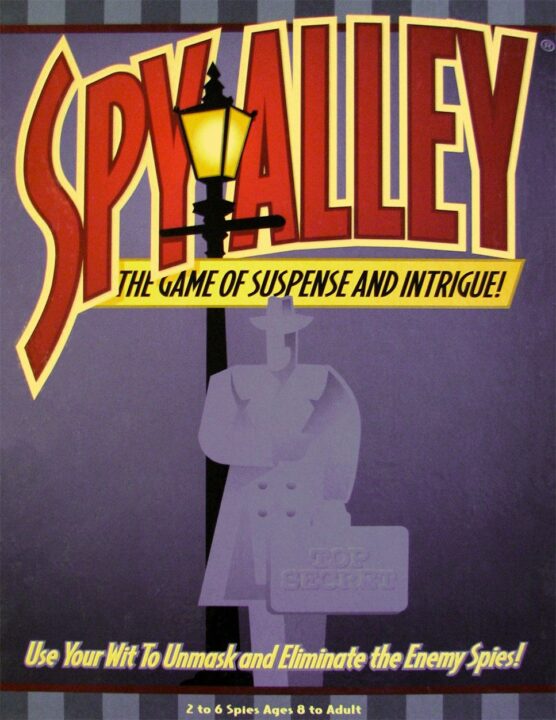If you like social board games that get everyone looking shifty and suspicious, then you’re probably curious about Spy. In this review, I’ll share my honest, slightly chaotic, definitely hard-earned thoughts after wrangling my friends into playing it more times than they’d like to remember. We laughed, we argued, we accused each other of lying (some of us better at it than others), and in the end, I came out with a few strong opinions—both good and bad—to help you figure out if Spy deserves a spot on your table or if it belongs back in the shadows.
How It Plays
Setting up
Deal one card to each player. All the cards say the same thing, except one—the Spy! Shuffle and make sure nobody knows who gets what. Keep your card secret, unless you’re a cat. Cats can’t read cards.
Gameplay
Players take turns asking each other questions about the secret location. You want to answer in a way that proves you know where you are—but don’t be too obvious, or the Spy will figure it out. If you are the Spy, try to blend in and avoid suspicion. I once asked, “What kind of shoes are good for this place?” and my friend blurted out “Swim fins.” We were all at the library. Oops.
Winning the game
If the real players catch the Spy, they win. If the Spy guesses the secret location before getting caught, the Spy wins. Simple, sneaky, and usually ends with laughs or accusations. Sometimes both.
Want to know more? Read our extensive strategy guide for SPY.
Gameplay Mechanics and Rules Clarity in Spy
Spy looked innocent enough when I first unboxed it. There’s this sense of mystery, which fits the spy theme, but also made me worry the rules would be more confusing than my cousin Rob’s explanation of cryptocurrency. Fortunately, that fear faded fast. The rulebook is clear and mostly typo-free (though my friend Anna spotted one odd sentence that said “Agents may never cross lasers with… themselves?”). Not a biggie, but it made us laugh for a good five minutes.
Each player takes on the role of a secret agent, but nobody knows who’s who until you slip up and give it away by mistake. The basic idea is simple: you move around the board, complete missions, and try to figure out who the real spies are. There’s a fun deduction element, but it doesn’t feel overwhelming. Actions are straightforward: you can move, pick up items, do missions, or sabotage other players. No odd, over-complicated combos to memorize—just good, clean spy stuff.
I really liked how turns move quickly. There’s just enough to do that you don’t get bored while waiting, but it’s not analysis-paralysis city either. The rules for movement and action are on one handy cheat sheet, perfect for those of us who forget things as soon as we hear them. My buddy Chris still can’t remember who the Prime Minister is, but he picked up Spy’s rules in two rounds.
If there’s a flaw, it’s that some of the mission cards could be clearer. We argued over the wording of “Swap Briefcases” for about ten minutes. But once we settled it, gameplay flowed well. Next up, let’s talk about the real reason I come back to Spy: the sneaky player interaction and bluffing that turns friends into frenemies.
Outwitting Your Friends: Spy’s Take On Player Interaction and Bluffing
Oh boy, let me tell you, when it comes to player interaction, Spy doesn’t just invite you to the party—it pushes you straight onto the dance floor. Forget quiet, polite board game nights. With Spy, my friends and I spent half the time giving each other shifty glances and the other half loudly accusing someone’s grandma of being a secret agent. (Sorry, Nana. Still love you.)
The bluffing, though—wow. It’s not just a mechanic, it’s the whole show. Every round, you’re either acting as the sneakiest liar or playing Sherlock Holmes with a bowl of Doritos. The game gives you just enough information to make wild guesses and, if you’re lucky, some clever deductions. I watched my pal Dave manage three straight wins just by pretending to forget the rules and then BAM—he outed the spy. It was almost art.
But here’s the thing that really spices up Spy: everyone’s forced to talk, make eye contact, and double guess every word. You can’t just zone out and hope to coast along. I tried my usual trick of hiding behind snacks, but even that didn’t save me from being wrongly accused. (To be fair, I do look suspicious when I eat nachos.)
The social tension is hilarious and strong, making Spy a solid pick for groups who love to argue—er, debate—and laugh. Next, I’ll tackle something that’s kept me up at night: does Spy balance strategy and luck, or will you end up blaming your misfortune on an unlucky coin flip?
How Much Does Luck Matter in Spy? (And Is There Room for Clever Moves?)
Every game night, we all ask the same thing: Are we playing Spy for our brains, or is it just to see who gets the good cards? Well, after a lot of suspicious glances and heated debates over pizza, I can safely say Spy lands somewhere in the middle. The game tries really hard to make you feel smart—bluffing, reading faces, pretending you don’t care your best friend just accused you of being the spy AGAIN. But does skill always win the day?
Here’s what my group noticed: you need to be crafty to win at Spy, but sometimes your card draw runs the show. The hidden identities are fun, but if you randomly get the spy card, you’re forced into defense mode whether you want it or not. I once got the spy card three games in a row and my friends started suspecting me even before the cards were dealt! That’s right, no matter how much you plan, luck has a way of making its presence known, sometimes more than I wish.
The deduction element is strong—put on your best poker face and you’ll last longer than my attempt at pretending I wasn’t the spy (which failed in about two seconds). But even if you bluff like a champion, the game can turn on a single guess or a lucky question. Spy rewards quick thinking and people-reading, but you can’t escape the luck factor. If you hate games where randomness sticks its nose into your plans, you might want to play something else.
Next time, I’ll talk about how often you’ll want to bring Spy to the table and just how long you’ll be pretending not to be a spy. Stay tuned for replay value and game duration—don’t worry, it won’t take as long as a Cold War stare-down!
How Many Times Can You Spy? Replay Value and Game Duration of Spy
If you’re wondering if Spy is a game your group will reach for again and again, let me tell you about my own experience. I’ve lost count of how many times I’ve been accused of being way too shifty-faced—even when it was someone else! Spy has a way of making you want to play ‘just one more round,’ especially with a group that likes shouting accusations over bowls of chips.
Each game goes pretty quick. In my group, a full round rarely takes more than 20 minutes. That means if someone starts getting salty (it happens), you can swap roles and start over faster than you can say, “No, really, I’m NOT the spy this time!” The speed keeps the game light and moving. Perfect for game nights when you want to fit in a bunch of different titles, or when you need filler between longer games. (Or, if your friends have the patience of a caffeinated squirrel, like mine.)
The replay value comes from seeing how your crew adapts. Maybe you have a friend who always over-explains, or an aunt who could lie to a polygraph. Each group brings new twists to Spy, but the core game remains the same. The only downside is that if you play too many times in a row, you might start catching on to everyone’s poker faces—and suddenly your group of deceivers becomes a group of suspicious detectives. That freshness can fade if overplayed in one night, so pace yourselves!
My verdict: If you like quick, social games and don’t mind a little friendly suspicion, Spy earns a spot on your shelf. Just beware of playing with professional liars. You know who you are.
Conclusion
Spy delivers a fun, social experience perfect for groups who enjoy bluffing and outsmarting friends—just don’t trust anyone named Steve, he’s always the spy. The rules are easy to learn, and every round moves fast, making it great for parties or when you want a quick game night fix. Still, the luck factor and repeat bluffing can wear thin after too many sessions, so it’s best enjoyed in moderation. All in all, Spy is a solid pick if you want laughs and sneaky moments, but strategy lovers might find themselves wanting a bit more control. That wraps up my review—thanks for reading and good luck keeping a straight face!


